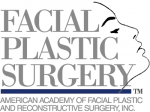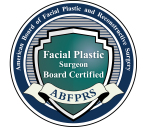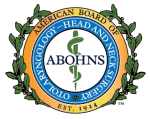Rhinoplasty Surgery in Orange County
The nose is a central aesthetic component of the face and therefore plays a vital role in one’s appearance. The ideal nose is one which brings balance and harmony to the face. Dr. Boeckmann considers every aspect of each patient’s unique facial appearance when evaluating the nose. The goal of nose surgery is to enhance and refine a patient’s nose while maintaining a natural result. Dr. Boeckmann’s goal for each rhinoplasty patient is for the end result to complement and soften the face, not to draw attention to the nose.
What is a Rhinoplasty?
A rhinoplasty (nose job) is a surgery designed to change the size, shape or proportions of the nose. Rhinoplasty is considered one of the most difficult operations in plastic surgery. Every nose is different due to the anatomical variations between patients. Therefore, the rhinoplasty surgeon must be able to perform a detailed and complete nasal analysis in order to identify all functional and aesthetic deformities necessitating correction in order to achieve the desired result.
What can a Rhinoplasty Correct?
There are a number of reasons an individual may be interested in a rhinoplasty. Some patients undergo the surgery to change the appearance of the nose, improve breathing through the nose, or both. A cosmetic rhinoplasty is used to correct nasal imperfections, while a functional (reconstructive) rhinoplasty is used to correct congenital abnormalities, physical trauma, and/or to improve breathing. In many cases, a combination of maneuvers can be performed in order to achieve the desired correction.
Cosmetic Rhinoplasty
The main reason for pursuing a nose job in Orange County is to correct nasal imperfections. When the nose size, shape, or projection is out of balance with other features of the face it can draw attention to itself. Addressing these imperfections with a cosmetic rhinoplasty can achieve more attractive facial balance. Common reasons patient seek cosmetic rhinoplasty include:
- Correction of a large nose
- Reshaping nostrils (large, wide, long)
- Drooping nasal tip
- Bump on the nasal bridge (nasal hump)
- Flat nasal bridge
Functional Rhinoplasty
Structural abnormalities resulting in impaired nasal breathing are the reason patients seek functional rhinoplasty. Dr. Boeckmann may also be able to simultaneously correct cosmetic issues at the time of surgery as well. A functional rhinoplasty can address a number of physical abnormalities such as:
- Nasal Polyps
- A deviated septum
- Large turbinates
- Displaced cartilage and nasal bones secondary to trauma
Revision (Secondary) Rhinoplasty
Revision rhinoplasty is performed when a primary nose surgery has left the patient with residual cosmetic or functional concerns. Revision rhinoplasty can be more complex in the setting of a previous aggressive rhinoplasty and may require more complex techniques. If the nose requires more structural support, cartilage grafts from other areas (e.g. ear or rib cartilage) may be needed.
Male Rhinoplasty
Rhinoplasty is one of the most requested procedures among males seeking plastic surgery. Surgically, there is a significant difference between rhinoplasty performed on women versus men. The nasal shape is a major factor contributing to a masculine appearance. Thus, male rhinoplasty should be balanced and proportional to the rest of the face without feminizing the appearance. To learn more about Dr. Boeckmann’s approach to male rhinoplasty click here.
Non-Surgical Rhinoplasty
This in-office procedure uses temporary facial fillers to sculpt a nose to provide greater balance and facial harmony to one’s appearance. Unlike traditional rhinoplasty surgery, these changes are temporary but can provide correction up to nine months to one year. To learn more about non-surgical rhinoplasty click here.
Who is a Candidate for Rhinoplasty?
The best rhinoplasty candidates are in good health who are dissatisfied with the size, shape, or function (breathing) of their nose. It is important to have realistic expectations regarding surgery. Minors should wait until the nose has reached its adult size/shape (age 14-16) before pursuing rhinoplasty. The consultation is therefore important in order for Dr Boeckmann to evaluate your overall health, anatomy, goals for surgery, and expectations to determine if you are a good candidate for rhinoplasty.
What is an Open versus Closed Rhinoplasty?
- Closed Rhinoplasty: A closed rhinoplasty is performed with all the incisions placed inside of the nose.This technique is chosen for patients requiring minor bridge modifications and less extensive changes to the cartilage of the nose. Because it is less invasive, recovery time is shorter than with other techniques.
- Open Rhinoplasty: The open rhinoplasty is the most common technique performed today. The open approach provides the surgeon greater access to the entire nose for precise modification of each individual component of the nose. For this technique, a small incision is made in the columella (the strip of skin between the nostrils) at the narrowest portion and extended inside the nostrils. This enables the skin to be elevated out of the way for easier access to reshape the nasal bone and cartilage.
What is the Recovery After Rhinoplasty?
Rhinoplasty recovery requires time and patience. Most patients take 1 to 2 weeks off from work and major social events to rest and recover following surgery. All patients will experience a variable degree of bruising and swelling for 1 to 2 weeks. Keeping your head elevated, avoiding lifting and/or straining all help diminish swelling.
One month following surgery the new nasal shape is emerging, however, some residual swelling is expected. Three months following surgery patients begin seeing more nasal tip refinement and the nose is 80% healed. At this stage patients report more confidence posing in photos and attending events. The remaining healing continues until 1 year following surgery at which point the subtle refinements have become apparent. Many patients report a significant increase in self confidence in their business and social life at this stage of healing.
Frequently Asked Questions
How to Prepare for a Rhinoplasty?
Prior to rhinoplasty, patients are required to avoid alcohol, smoking, and any blood thinning agents (medications, herbal supplements, etc). You will be given detailed instructions for any postoperative supplies needed in order to ensure your recovery goes as smoothly as possible.
What to Expect Following Surgery
A rhinoplasty is an outpatient procedure that takes 2 to 3 hours for a typical primary cosmetic rhinoplasty or from 3 to 6 hours for a functional or revision rhinoplasty depending upon the degree of complexity. Rhinoplasty is typically performed under general anesthesia or intravenous anesthesia combined with local anesthetic. Because you are under anesthesia you will not remember the actual surgery and will not experience any discomfort.
At the end of surgery the nose is bandaged, a splint is placed, and once you are fully alert you can be driven home to rest. Patients are instructed to keep their head elevated for the first week to minimize swelling and bruising. The nasal bandage, splint, and any sutures are removed 1 week following surgery.
Does a Rhinoplasty Hurt?
Most patients are surprised how little pain they experience following surgery. You will have a prescription for pain medication as needed in the early stages of recovery, which typically resolves within 2 to 3 days. The most difficult part of the recovery is the sensation of nasal congestion and stuffiness. Some patients also report facial tenderness and headaches 2 to 3 days following surgery.
When Can I Exercise After a Rhinoplasty?
All patients have some physical activity restrictions for 6 weeks following rhinoplasty. No exercise is recommended the first 1 to 2 weeks following surgery. Your physical activity restrictions will then be determined by your plastic surgeon. Full return of your usual exercise routine will be determined on an individual basis.
When Can I Blow My Nose After Rhinoplasty?
Nose blowing is not allowed for 2 to 3 week following rhinoplasty to avoid endangering the results of surgery. All patients experience stuffiness and are able to gently rinse their nose with nasal saline spray.
Will Insurance Cover My Rhinoplasty Surgery?
Your insurance may cover some portions of your rhinoplasty procedure if significant functional problems are affecting your health. Health insurance does not cover elective cosmetic surgery.
How to Choose the Right Rhinoplasty Surgeon in Orange County?
Choosing the right plastic surgeon for a rhinoplasty is critical for the success of your procedures. Dr. Jacob Boeckmann is double board-certified in both Facial Plastic and Reconstructive Surgery as well as Otolaryngology-Head and Neck Surgery. He is respected in Orange County for his surgical skills and natural results. To learn more about the rhinoplasty procedure in Orange County, contact the office at 949-273-3112 for your consultation with Dr Boeckmann.


